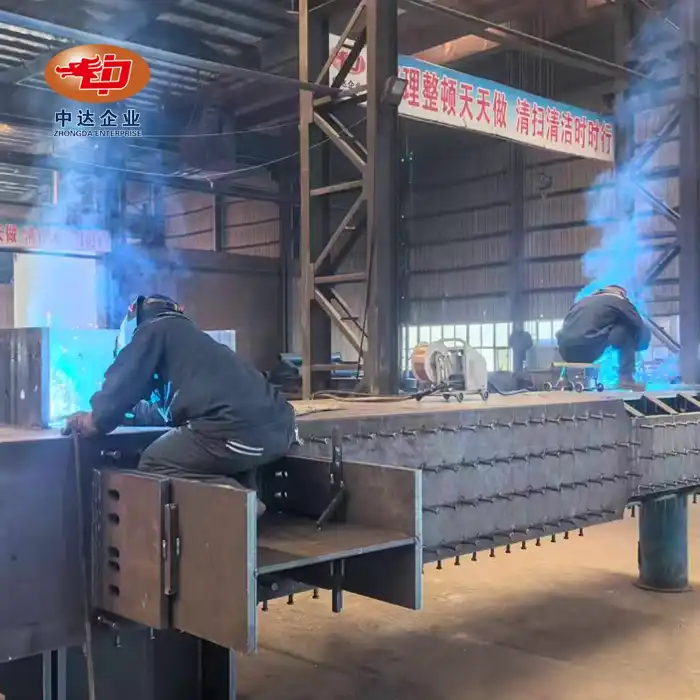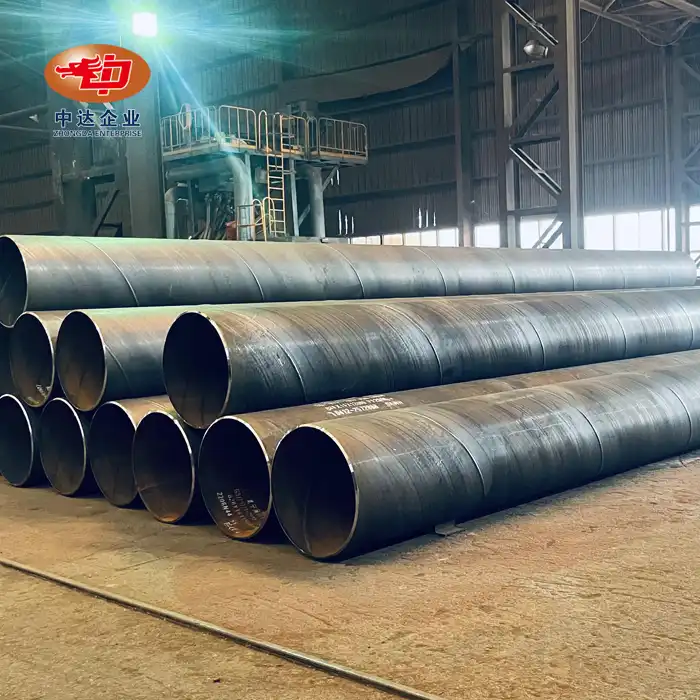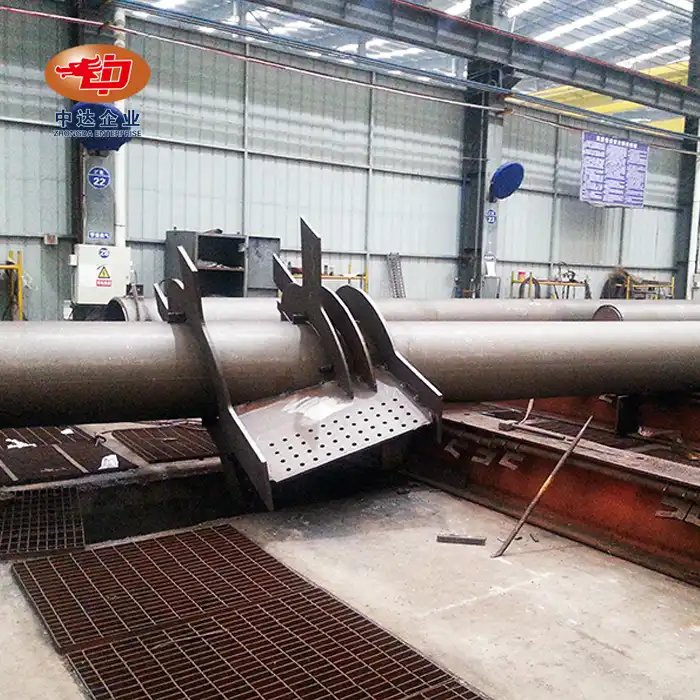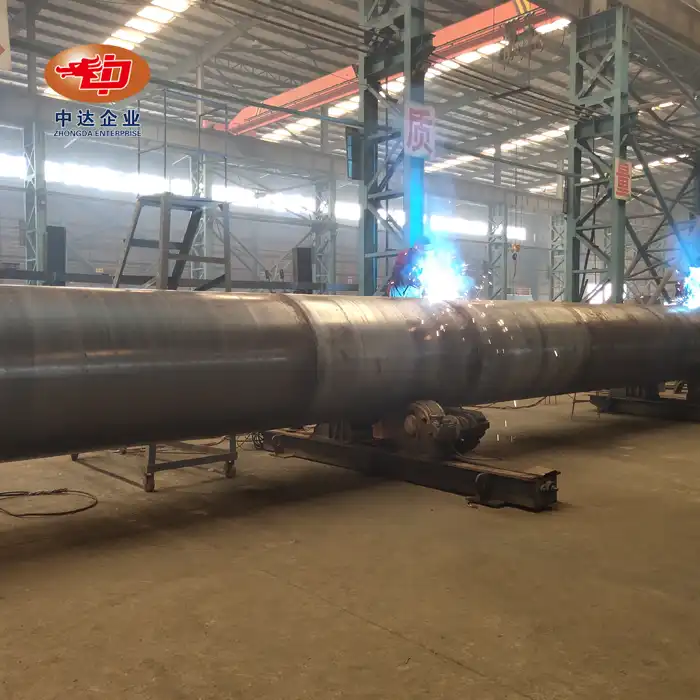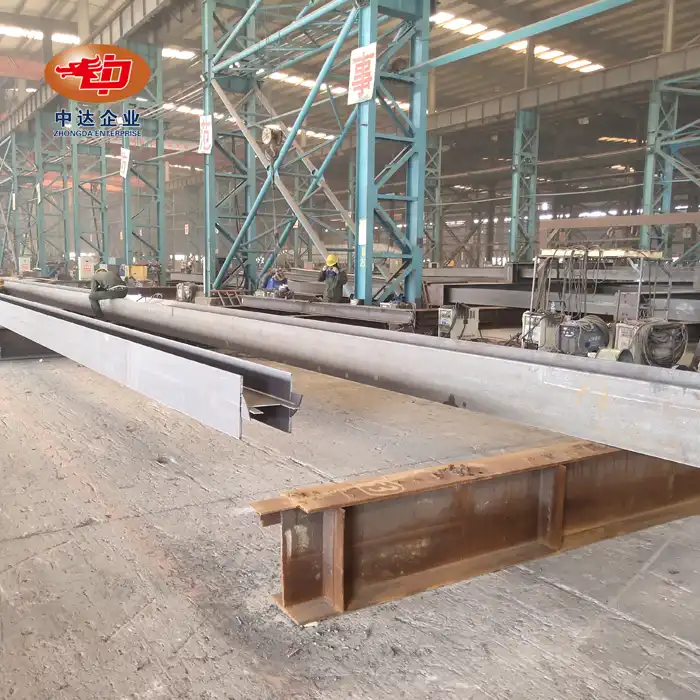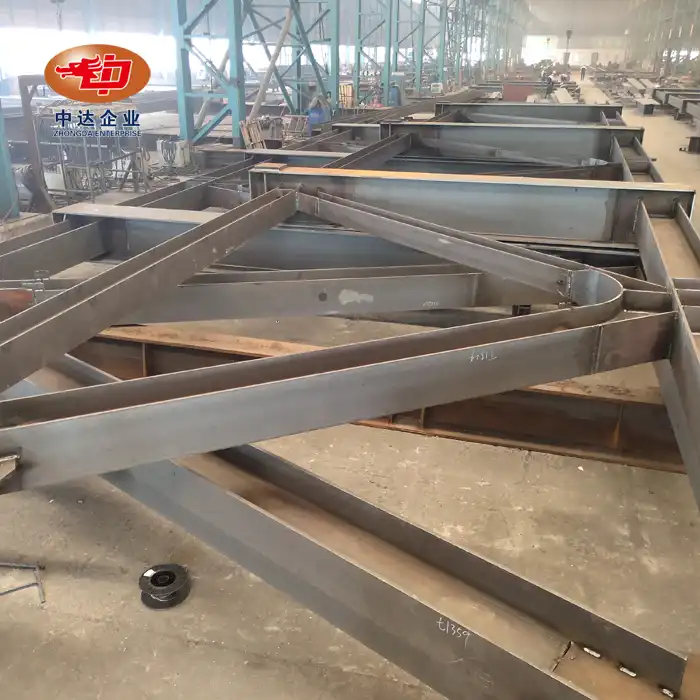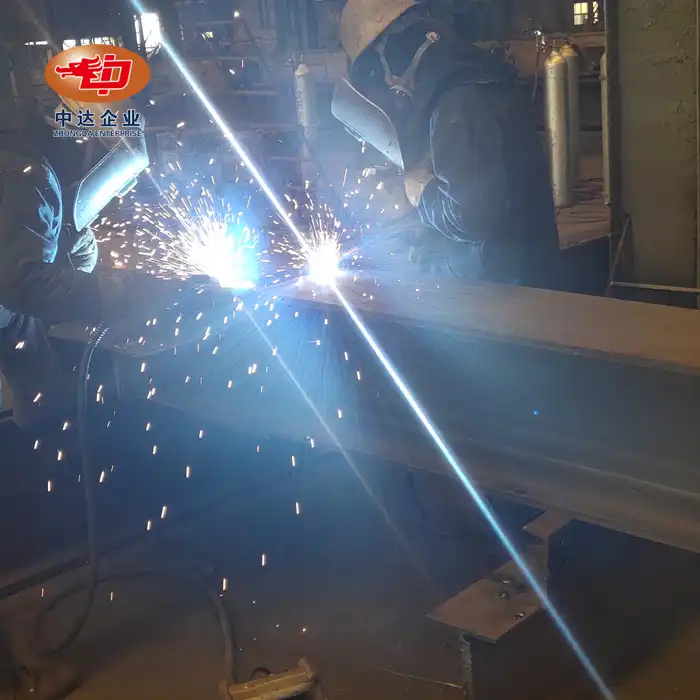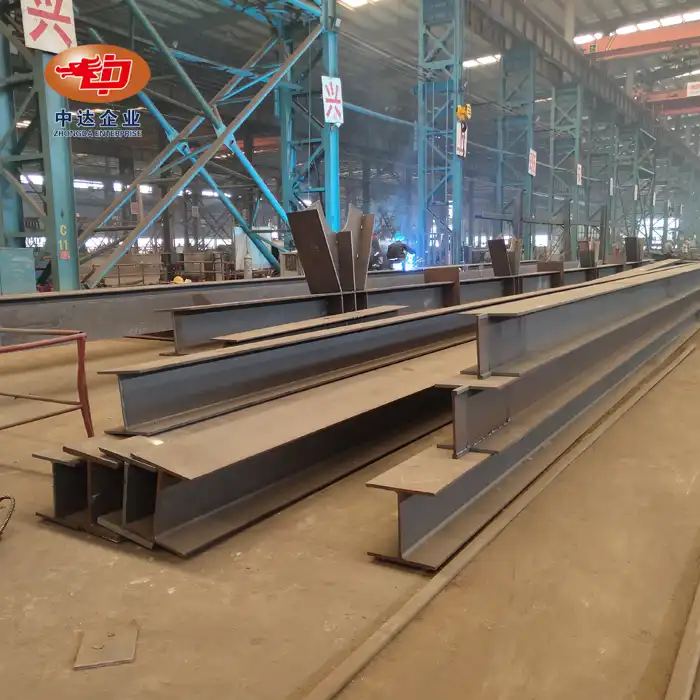Structural Advantages and Design Flexibility
Space Frame Roof: Lightweight Marvel
Space frame roofs represent a pinnacle of structural engineering ingenuity. These three-dimensional truss-like structures distribute loads efficiently across their entire framework, allowing for incredibly lightweight yet strong designs. This characteristic makes space frames particularly advantageous for projects requiring expansive, column-free spaces. The inherent strength-to-weight ratio of space frames often surpasses that of traditional steel roofing, enabling architects to push the boundaries of design possibilities.
Traditional Steel Roofing: Proven Reliability
Traditional steel roofing systems have stood the test of time, offering a dependable solution for a diverse array of structures. These systems typically consist of steel sheets or panels supported by a network of purlins and rafters. While they may not offer the same expansive spans as space frames without additional support, traditional steel roofs excel in their versatility and adaptability to various building shapes and sizes. Their straightforward design often translates to quicker installation times and lower initial costs compared to more complex space frame structures.

Aesthetic and Architectural Considerations
The choice between space frame and traditional steel roofing significantly impacts a building's aesthetic appeal. Space frames offer a distinctive, modern look with their intricate geometric patterns, often becoming a focal point of the architectural design. They can be left exposed, creating visually striking interiors that showcase the structural elements. Traditional steel roofing, while more conventional in appearance, provides a clean, sleek look that can be customized with various finishes and colors to complement any architectural style. The decision often hinges on the desired visual impact and how the roof integrates with the overall building design.
Cost Implications and Construction Efficiency
Initial Investment vs. Long-Term Value
The cost comparison between space frame roofs and traditional steel roofing is nuanced and project-dependent. Initially, space frame structures may have higher material and design costs due to their complex geometry and specialized components. However, their lightweight nature can lead to significant savings in foundation and support structure costs, especially for large-span buildings. Traditional steel roofing often presents a lower upfront cost, making it an attractive option for budget-conscious projects. When evaluating costs, it's crucial to consider not just the initial investment but also long-term factors such as maintenance requirements, energy efficiency, and potential structural adaptability.
Construction Timeline and Labor Requirements
The efficiency of the construction process is a critical factor in roofing selection. Space frame roofs, despite their complexity, often boast rapid assembly times once on-site. Many components can be prefabricated off-site, reducing on-site labor and minimizing disruptions. This aspect is particularly beneficial for projects with tight deadlines or in areas with challenging weather conditions. Traditional steel roofing, while generally straightforward to install, may require more on-site work and can be more susceptible to weather-related delays during construction. The choice between the two can significantly impact project timelines and labor costs, making it essential to align the roofing system with overall project scheduling and resource allocation.
Adaptability and Future Modifications
The long-term adaptability of a roofing system is an often overlooked but crucial consideration. Space frame structures offer remarkable flexibility for future modifications. Their modular nature allows for relatively easy expansion or reconfiguration, accommodating changing spatial needs without major structural overhauls. This adaptability can be particularly valuable for facilities that anticipate future growth or functional changes. Traditional steel roofing, while less flexible in terms of major structural changes, offers simplicity in maintenance and repairs. Minor modifications, such as adding skylights or ventilation systems, are often more straightforward with traditional steel roofing. The choice between the two should consider not just immediate needs but also potential future adaptations of the structure.
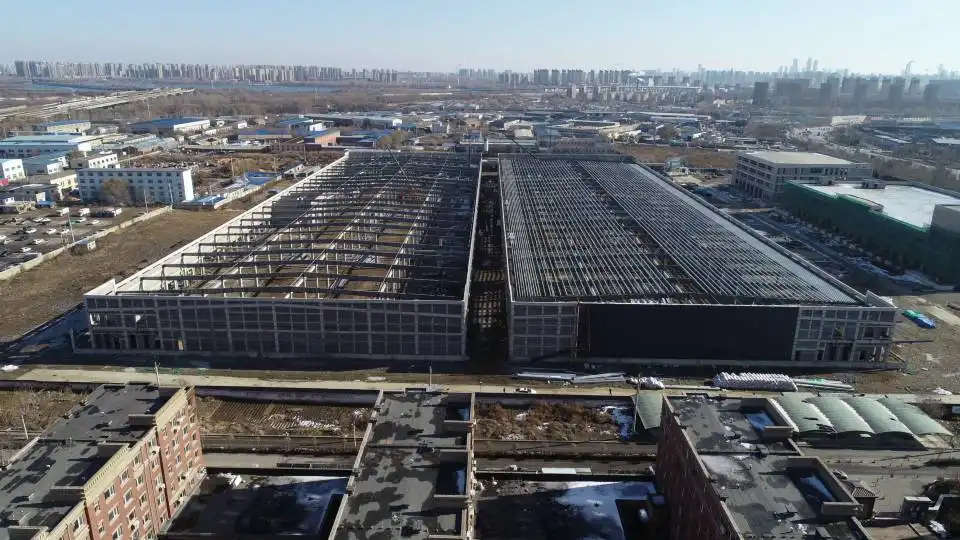
Performance in Extreme Conditions and Sustainability
Weather Resistance and Durability
In regions prone to extreme weather conditions, the performance of roofing systems becomes paramount. Space frame roofs excel in their ability to withstand heavy snow loads and high winds, thanks to their efficient load distribution. Their open structure also prevents the accumulation of snow and ice, reducing the risk of collapse. Traditional steel roofing, when properly designed and installed, also offers excellent weather resistance. However, it may require additional reinforcement or more frequent maintenance in areas with severe weather patterns. Zhongda Steel's expertise in -60°C Weathering Steel Anti-corrosion Technology ensures that both our space frame and traditional steel roofing solutions can withstand even the harshest environmental conditions, from Arctic climates to tropical storms.
Energy Efficiency and Environmental Impact
Sustainability is an increasingly important factor in roofing selection. Space frame roofs, with their ability to incorporate large spans of skylights or translucent materials, can significantly reduce the need for artificial lighting, leading to energy savings. Their design also facilitates natural ventilation, potentially reducing cooling costs. Traditional steel roofing offers opportunities for sustainability through the use of reflective coatings to reduce heat absorption and the integration of solar panels. Both systems can be designed with recyclable materials, aligning with green building practices. The choice between the two should consider the specific environmental goals of the project, such as LEED certification requirements or local energy efficiency standards.
Maintenance and Lifecycle Costs
The long-term performance and cost of a roofing system extend far beyond initial installation. Space frame roofs typically require less frequent maintenance due to their corrosion-resistant components and fewer potential leak points. Their open structure also allows for easier inspection and access to building systems. Traditional steel roofing may necessitate more regular maintenance, including periodic recoating or replacement of individual panels. However, when issues do arise, repairs to traditional steel roofs are often simpler and more cost-effective. When evaluating lifecycle costs, it's essential to consider not just routine maintenance but also the potential for major repairs or replacements over the building's lifespan. Zhongda Steel's commitment to quality ensures that both our space frame and traditional steel roofing solutions are designed for durability and ease of maintenance, minimizing long-term costs for our clients.
Conclusion
The choice between space frame roofs and traditional steel roofing is not a one-size-fits-all decision. Each system offers unique advantages that cater to different project requirements, architectural visions, and environmental considerations. Space frames excel in creating expansive, column-free spaces with a modern aesthetic, while traditional steel roofing provides reliable, cost-effective solutions for a wide range of structures. Ultimately, the decision should be based on a comprehensive analysis of structural needs, budgetary constraints, aesthetic goals, and long-term performance expectations.
Contact Us
At Zhongda Steel, we understand the complexities of this decision and are committed to guiding our clients through every step of the process. Our expertise in both space frame structures and traditional steel roofing, combined with our state-of-the-art manufacturing capabilities, ensures that we can deliver the optimal solution for your project, regardless of its scale or complexity. For personalized advice on choosing the right roofing system for your next project, contact our team of experts at Ava@zd-steels.com. Let Zhongda Steel's engineering excellence and global experience bring your architectural vision to life, with roofing solutions that combine innovation, durability, and uncompromising quality.











